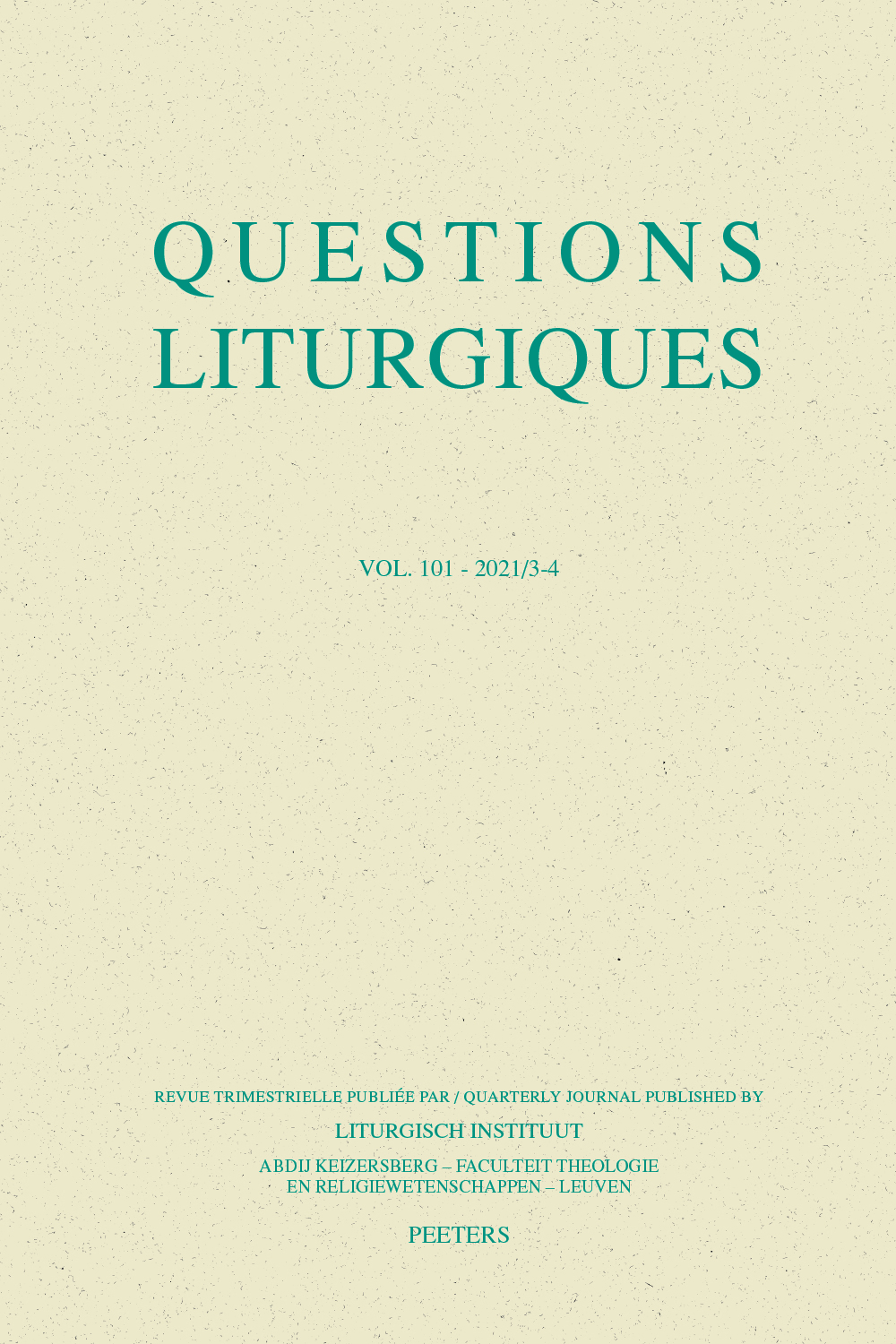 previous article in this issue previous article in this issue | next article in this issue  |

Preview first page |
Document Details : Title: Gloria Laus, Singing on the Road to the City of God Author(s): VAN DER WERF, Ger Journal: Questions Liturgiques/Studies in Liturgy Volume: 102 Issue: 1-2 Date: 2022 Pages: 59-75 DOI: 10.2143/QL.102.1.3290876 Abstract : Around 820, Theodulf of Orléans (ca. 745-820) composed the hymn Gloria laus in thirty-nine elegiac distiches, intended for the procession on Palm Sunday in Angers. He derived his theme from the texts for Palm Sunday that can be found in the Old Spanish liturgical books. The hymn was soon to be found in liturgical books, and is sung in the Latin liturgy to the present day. In Gloria laus the author stressed the meaning of the procession as a celebratory event that referred back to the historical entry and forward to the end of times, because Christ’s passage through death lies behind us. In this article, the Latin text of the hymn is provided with translation, followed by an analysis of the text: Theodulf’s theological interpretation of the commemoration of the entry and the form of the procession in Angers described in this hymn. Finally, the findings are situated in the historical context of the development of the Palm Sunday ritual in Francia. Vers 820, Théodulf d’Orléans (ca. 745-820) a composé l’hymne Gloria laus en trente-neuf distiques élégiaques, destiné à la procession du dimanche des Rameaux à Angers. Il a puisé son thème dans les textes du dimanche des Rameaux que l’on trouve dans les livres liturgiques du vieil espagnol. L’hymne n’a pas tardé à se retrouver dans les livres liturgiques, et il est chanté dans la liturgie latine jusqu’à nos jours. Dans Gloria laus, l’auteur soulignait la signification de la procession comme événement de célébration qui renvoie à l’entrée dans l’histoire et à la fin des temps, car le passage du Christ à travers la mort est derrière nous. Dans cet article, le texte latin de l’hymne est fourni avec sa traduction, suivie d’une analyse du texte: l’interprétation théologique de Théodulf de la commémoration de l’entrée et la forme de la procession à Angers décrite dans cet hymne. Enfin, les résultats sont situés dans le contexte historique du développement du rituel du dimanche des Rameaux en les royaumes francs. |
|


